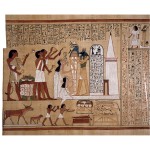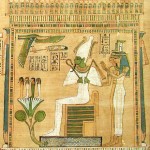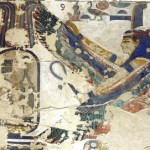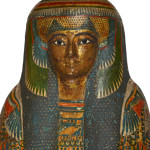
A visit to the British Museum’s exhibition “Ancient Lives. New Discoveries”
By Andrea Byrnes. Published in Egyptological, Magazine Reviews. 16th June 2014 Ancient Lives. New Discoveries British Museum Exhibition dates: 22nd May – 30th November 2014 Sponsored by Julius Baer; Technology Partner – Samsung When I arrived home after visiting and enjoying Ancient Lives, I found that a friend who has also visited the […] [more…]
Edition - July, 2011
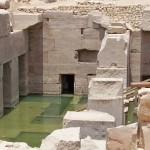
Notes on the Osireion at Abydos
The Osireion was first excavated by Sir William Flinders Petrie, Margaret Murray and Petrie’s wife in the early 1900s. They found the tunnel and excavated towards what they called the “hypogeum.” It was full of sand and Roman filling when they began to clear it. Even before the full excavation of the site Murray speculated, convincingly, that “this was the building for the special worship of Osiris and the celebration of the Mysteries” [more…]
Shabtis in Croatian Private Collections and Museums
Abstract
Approximately 5,000 Egyptian artefacts are housed in the more than twenty museum and known private collections in Croatia (4,042 in museums and circa 1,000 in private collections) dating from the 4th millennium BC to AD 641. There are 375 shabtis in nine museums and the known private collections in Croatia. Most (346) came from the Pharaonic periods of Ancient Egypt, but an additional 26 shabtis and 3 pseudoshabtis were unearthed during excavations in the territory of the Roman provinces of Dalmatia and Pannonia (today in Croatia). These shabtis were usually connected with the diffusion of the Egyptian cults during Graeco-Roman periods (c. 4th century BC to the 3rd century AD). The largest collection of shabtis is held in the Archaeological Museum in Zagreb (312). These shabtis were collected over a long period of time, from 1865 to today, and from various sources, but most are of unknown provenance. My analysis showed that all shabtis are genuine. They were crafted between the Middle Kingdom (AMZ, inv. no. E-310) and the 3rd c. AD. The following analysis of the shabtis showed that almost all known types and forms of shabtis can be found in Croatian collections. [more…]
Edition - April, 2011
Book Review: The Ancient Egyptian Books of the Afterlife
The Ancient Egyptian Books of the Afterlife by Erik Hornung (Translated by David Lorton) Cornell University Press ISBN-13: 978-0801485152 Originally written in German, this book is such a valuable source of information about ancient Egytian funerary texts that it was translated into English by David Lorton for publication by Cornell University Press. The funerary texts […] [more…]
 By
By 